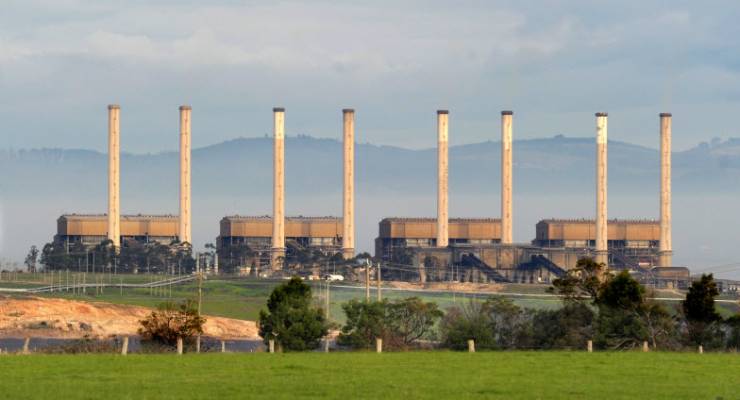
The closure of the Hazelwood power plant is a small blow to the community surrounding it compared to the cuts to the electricity industry under the Kennett government, says an expert who studied the decline of prosperity in the region after privatisation in the 1990s.
French energy giant Engie announced on Thursday, after months of speculation, that it would close the Hazelwood mine and power station by the end of March 2017, with up to 250 workers and contractors staying on as part of demolition and rehabilitation work. Both the state and federal governments have announced assistance packages for the region, with the Andrews government committing $22 million to establish a Worker Transition Centre, financial advice and counselling, support for other businesses in the area to make the transition and an expansion of the Back to Work program. The government will also spend $20 million on establishing the Latrobe Valley Authority, which will be based in Morwell and lead the government’s response.
At a federal level, $43 million has been committed to local infrastructure projects ($20 million), direct assistance for employees ($3 million) and a Regional Jobs and Investment Package ($20 million).
Dr Bob Birrell, now president of the Australian Population Research Institute, studied the effects of the privatisation of the Victorian power industry through the 1990s, finding a decrease in the net population, as well as an increase in unemployment levels. He says the challenge for the Latrobe Valley will be to entice young people to live and work in the region after the power station is gone.
“I think the overall impact will be on the young people, the shrinking number of young people. There’s a been a long-term movement of young people out of the valley, and it’s just going to continue.”
Unemployment is on the rise in the Latrobe City Council region, up to 10.7% in June this year, from 6.9% at the same time last year. The Victorian unemployment rate is 5.6%. “The valley relative to other regional areas is going to do it hard,” Birrell said.
Birrell’s research paper, published in 2001, finds that in the late 1980s, about 11,000 people worked for the State Electrical Commission in the Latrobe Valley. That figure dropped to 2600 at the then-privately owned power companies in 2001. The report, which was commissioned by the union movement in the Latrobe Valley, found that 30% of families in Moe and Morwell did not have breadwinners.
With a decrease in jobs since, and the loss of about 800 jobs through the closure of Hazelwood, Birrell is not optimistic about plans for redevelopment in the area announced by both the federal and state governments.
“They’re talking about involving some of the power workers in the remediation of the site, and that will obviously be important, but some of the more grandiose ideas about establishing new industries in the valley — I don’t believe it will happen.”
While Birrell is not optimistic for change for the region, he says that this blow is not comparable to the economic hit the region took after the state power grid was privatised in the 1990s, with many jobs lost, but it will compound the job losses and unemployment already in the area.
“The earlier assault has proven much more fundamental, and it’s never really recovered from that.”
“The biggest problem is the withdrawal of the income of the workers affected. The situation is nothing like it was with the Kennett attack on the valley — nowhere near. We’re not going to get a repeat of that episode, when thousands of jobs were lost then, and the workers themselves are going to be reasonably well compensated because many of them have been there for a long time with redundancy payment, they’ll have reserves.”
The Victorian Council of Social Services is warning of a “social catastrophe” if the local community isn’t supported, with VCOSS boss Emma King saying in a statement: “The Victorian Government, the Commonwealth and ENGIE must move swiftly to soften the blow of this closure.”
Birrell says governments should look towards enticing young people to stay in the region and raise families to try and emulate the success of regional hubs like Ballarat and Bendigo.
“What we’re seeing in other regional centres doing well like Ballarat and Bendigo is that their biggest industry is providing services for additional people — more houses and people, they are like sponge cities and that is not happening in the Valley.”
He believes that workers in the towns surrounding Hazelwood could increasingly become commuters to Melbourne, which is a two-hour train ride away. Birrell said it would be “unwise” to call the closure of Hazelwood a death knell for the area, which has already faced its biggest cuts. “This latest blow is just the last of a great number.”








“Their biggest industry is providing services for additional people” – how does that work? Where does the money to pay them come from?